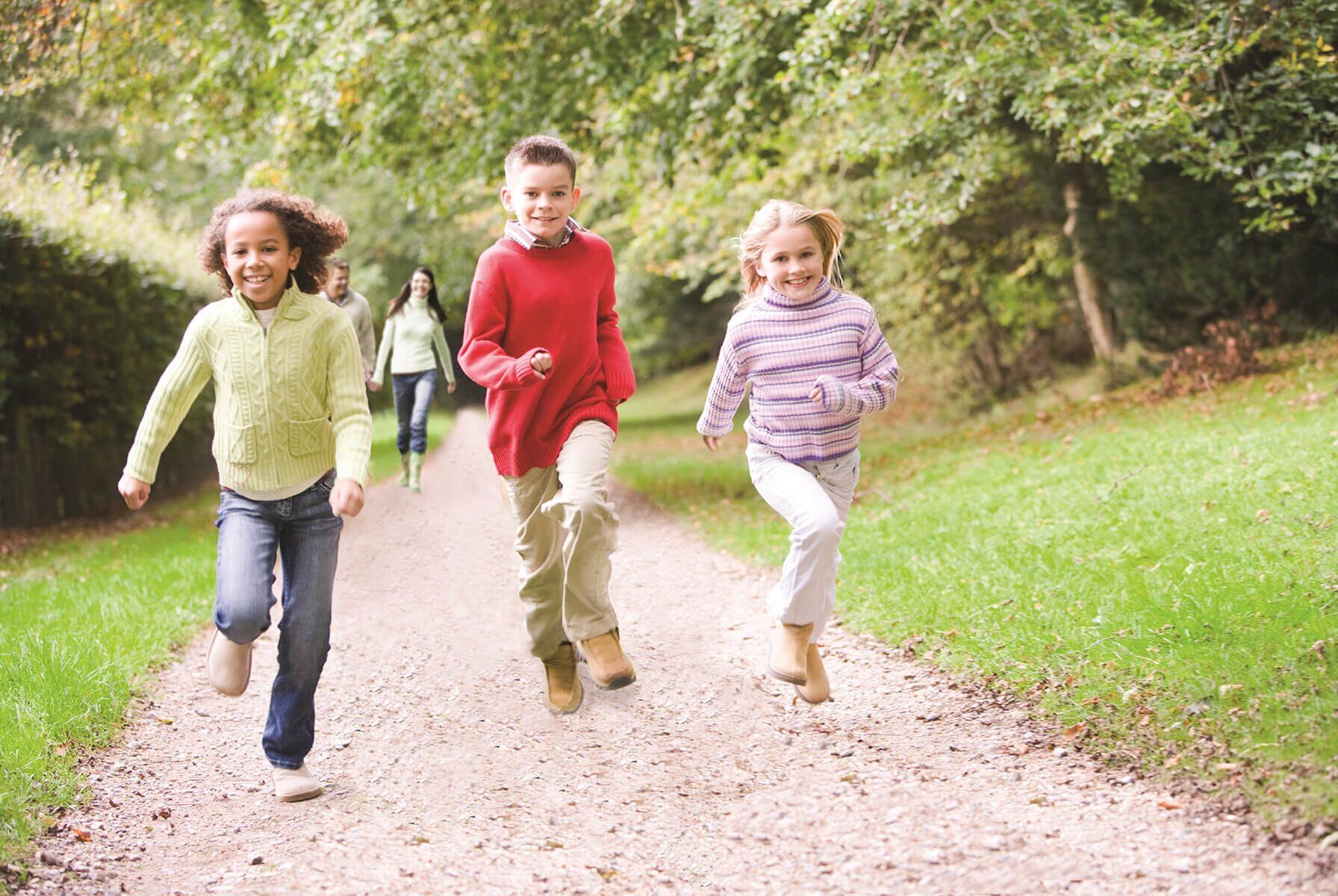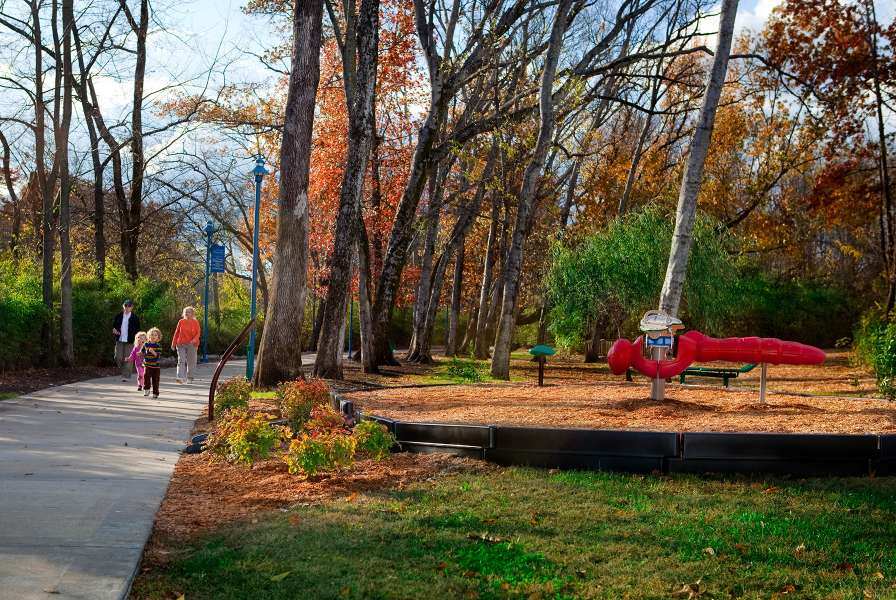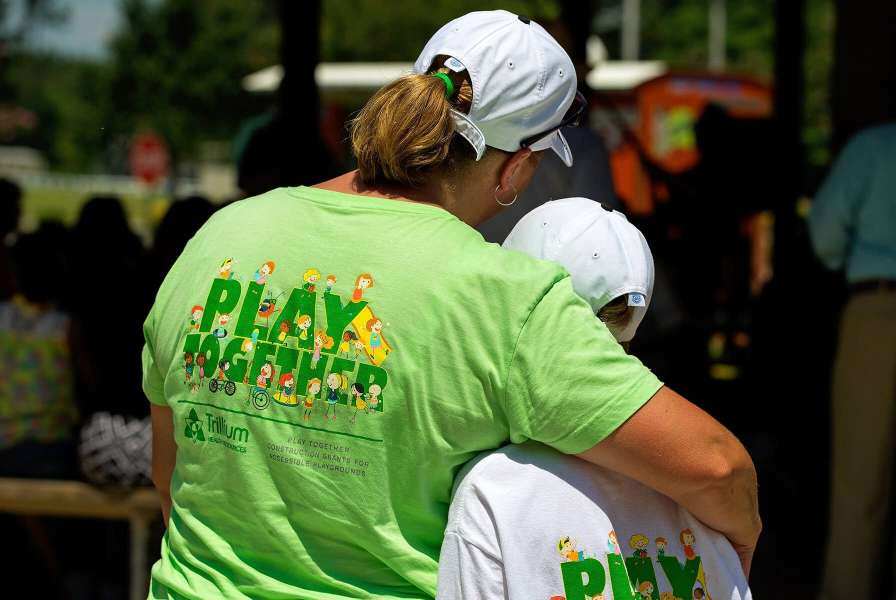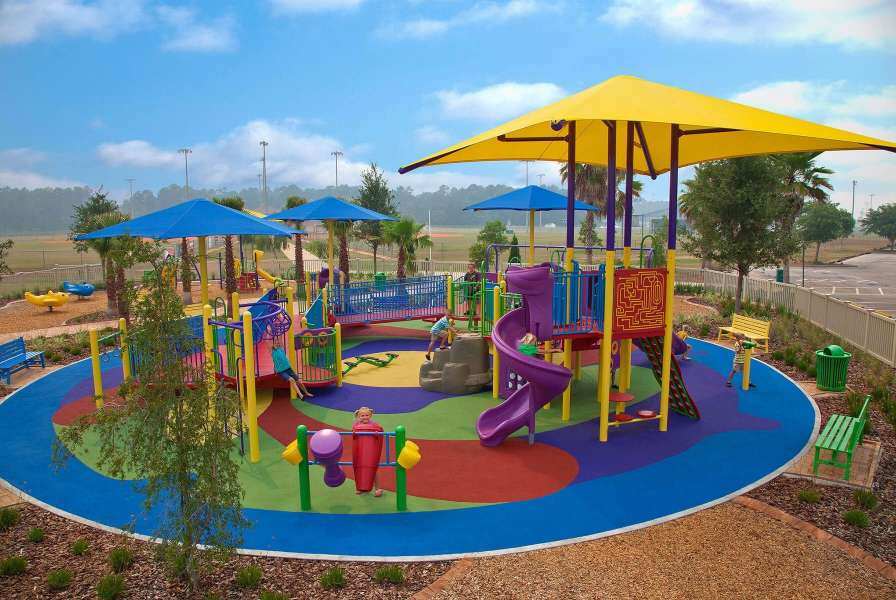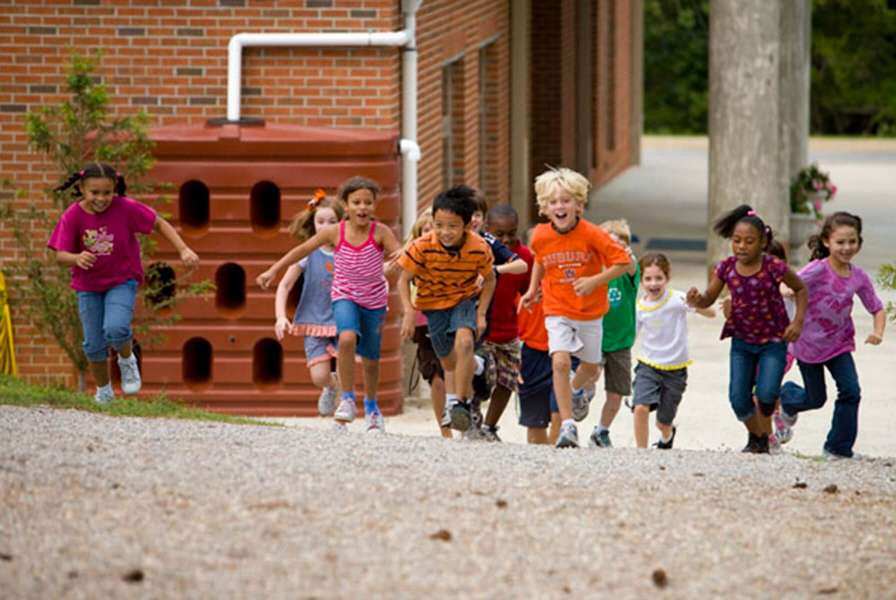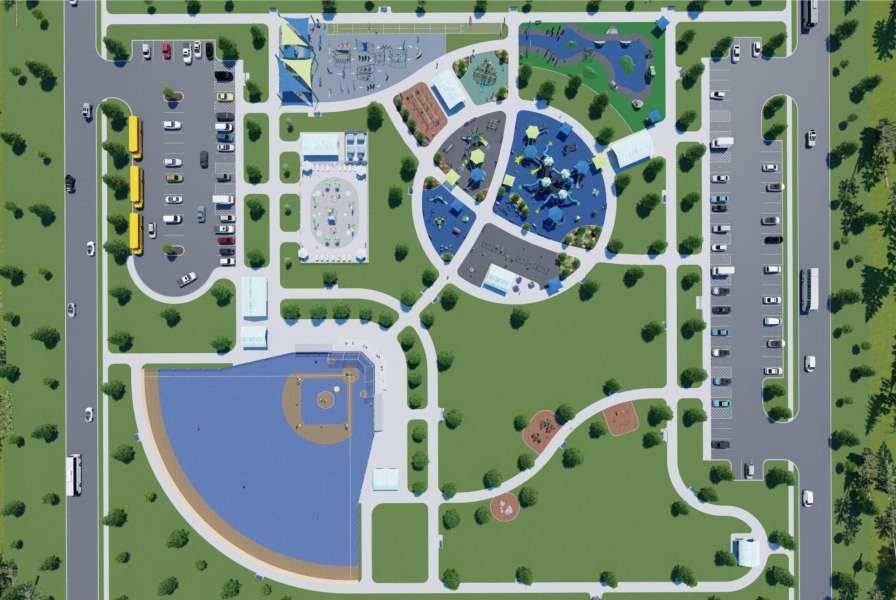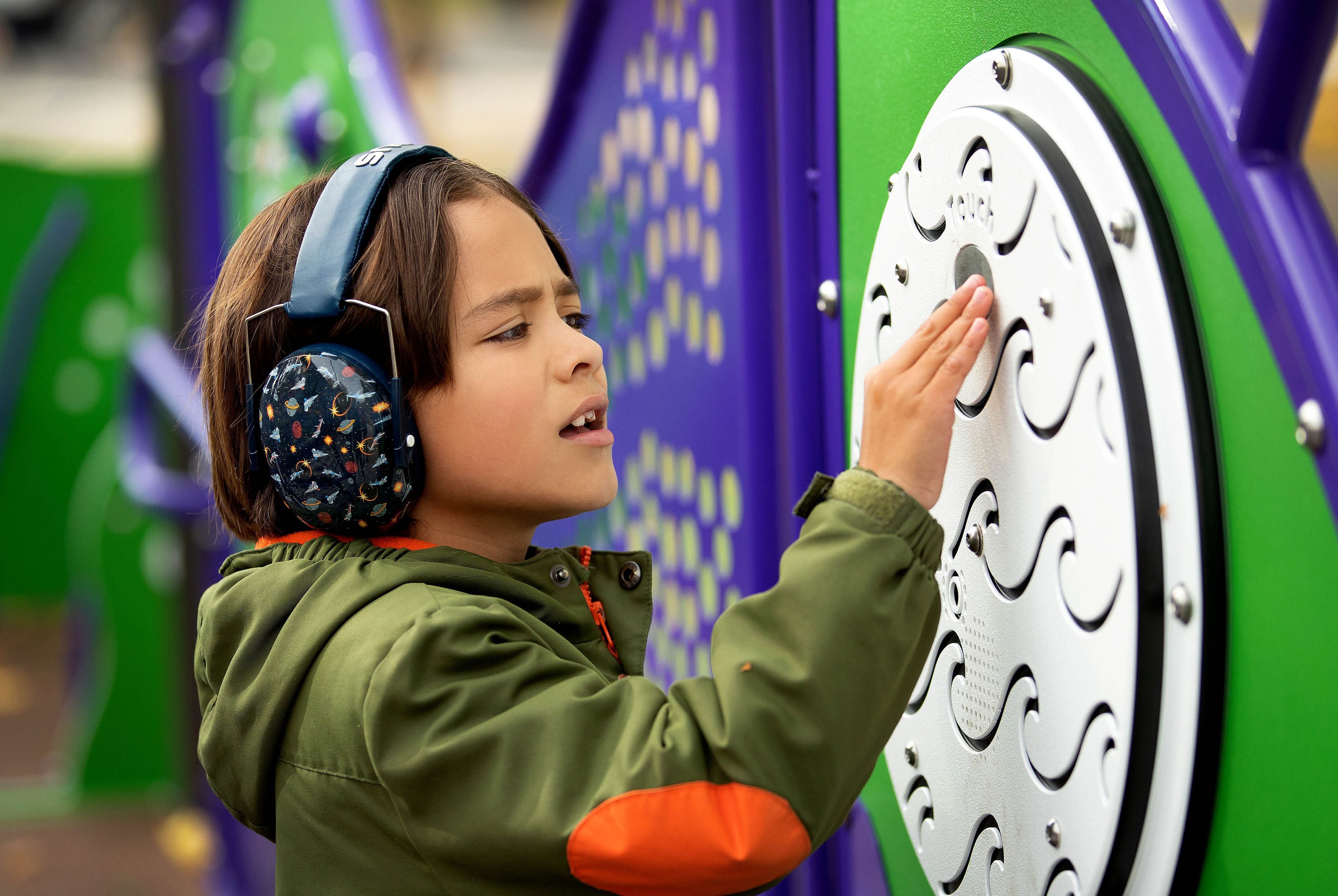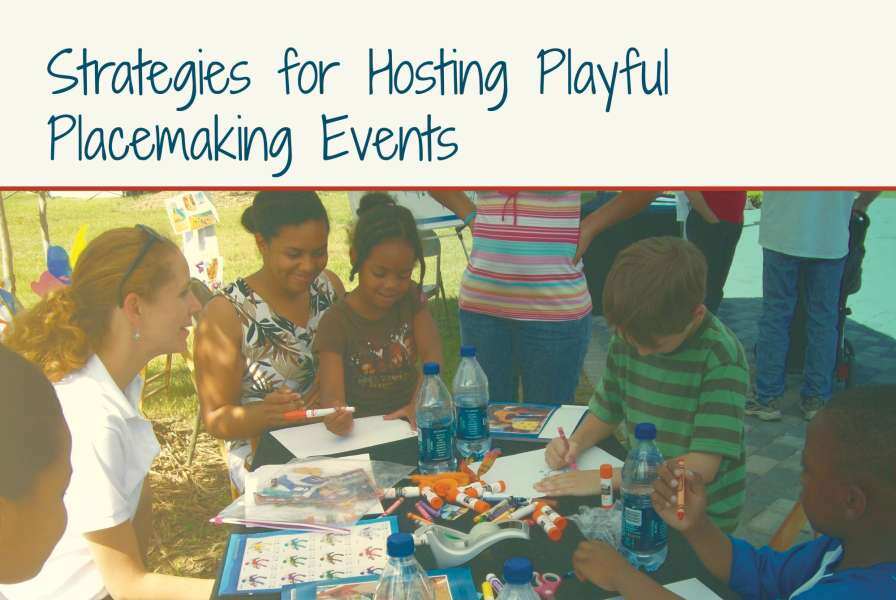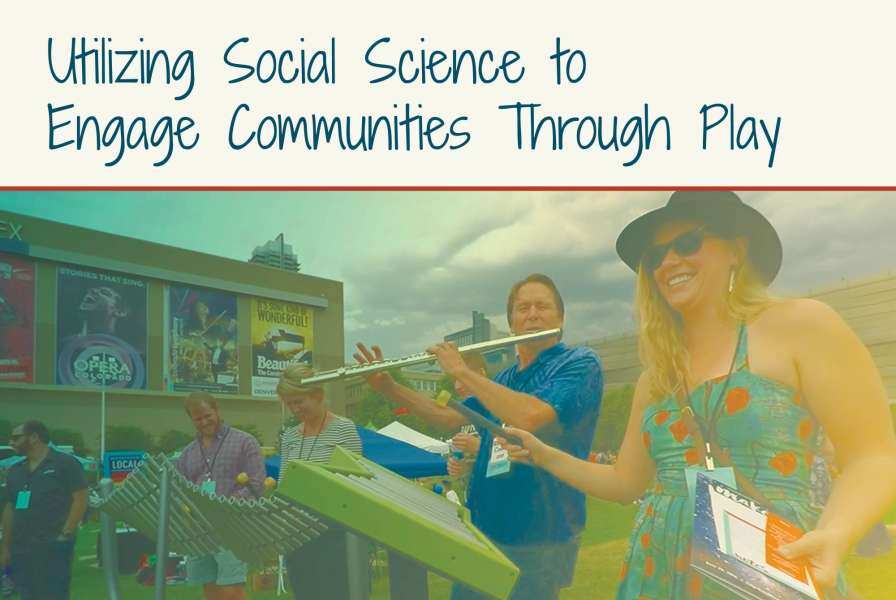If you had the opportunity to go hiking with your family, friends, or youth group as a youngster, you can surely remember the smell of the trees, the texture of the natural ground surface underfoot, and the closeness of your family or peers as you played together and made discoveries along the way. Perhaps such trips were made by bicycle and covered a larger, more dramatic territory. Such lifelong memories reflect a rich childhood full of engaging, healthy activity.
Incorporating nature play along a pathway creates play opportunities for the whole family to explore, learn and enjoy. To motivate children, families, and youth organizations to get outdoors and engage in healthy, stimulating activity in natural surroundings, here is a review of some design principles included in the research-based Pathways for Play strategy:
1. Infuse Play and Learning Value into Pathways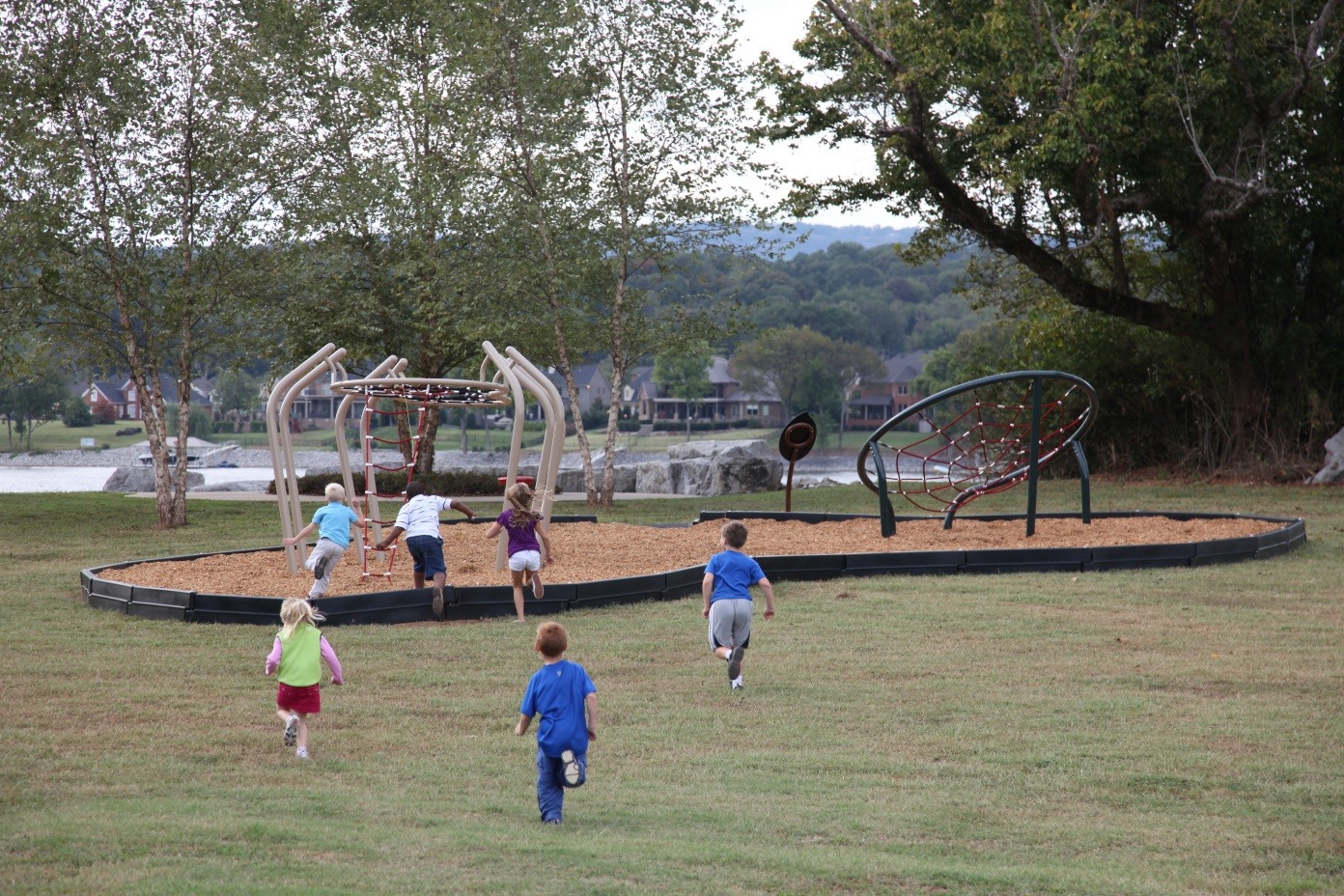 Provide a diversity of play opportunities to attract a broad range of children and families. This can be accomplished by locating play pockets at regular intervals, 5 to 10 minutes apart (approx. 300 to 500 feet) to accommodate the attention span and speed of movement of children, which creates opportunities for discovery along the way.
Provide a diversity of play opportunities to attract a broad range of children and families. This can be accomplished by locating play pockets at regular intervals, 5 to 10 minutes apart (approx. 300 to 500 feet) to accommodate the attention span and speed of movement of children, which creates opportunities for discovery along the way.
When you connect pathways to neighborhoods it allows children to move around independently. Also emphasize curving pathways to motivate a sense of exploration, discovery, and feeling of something new “around the next corner,” motivates children to keep moving forward.
2. Create Shared-Use, Inclusive Pathways
A pathway should be inclusive and universally designed for people of all ages, abilities, and cultural backgrounds. Try integrating pathways in the physical fabric of neighborhoods close to where children live for ease of use and to encourage independent play as children grow and become confident navigators of the outdoor environment.
3. Connect Pathways to Meaningful Destinations
Consider connecting pathways to meaningful environments like playgrounds, schools, community attractions, and parks. This can lead to increased motivation and playfulness as well as additional use by families traveling from place to place.
4. Locate Pathways Where Children Live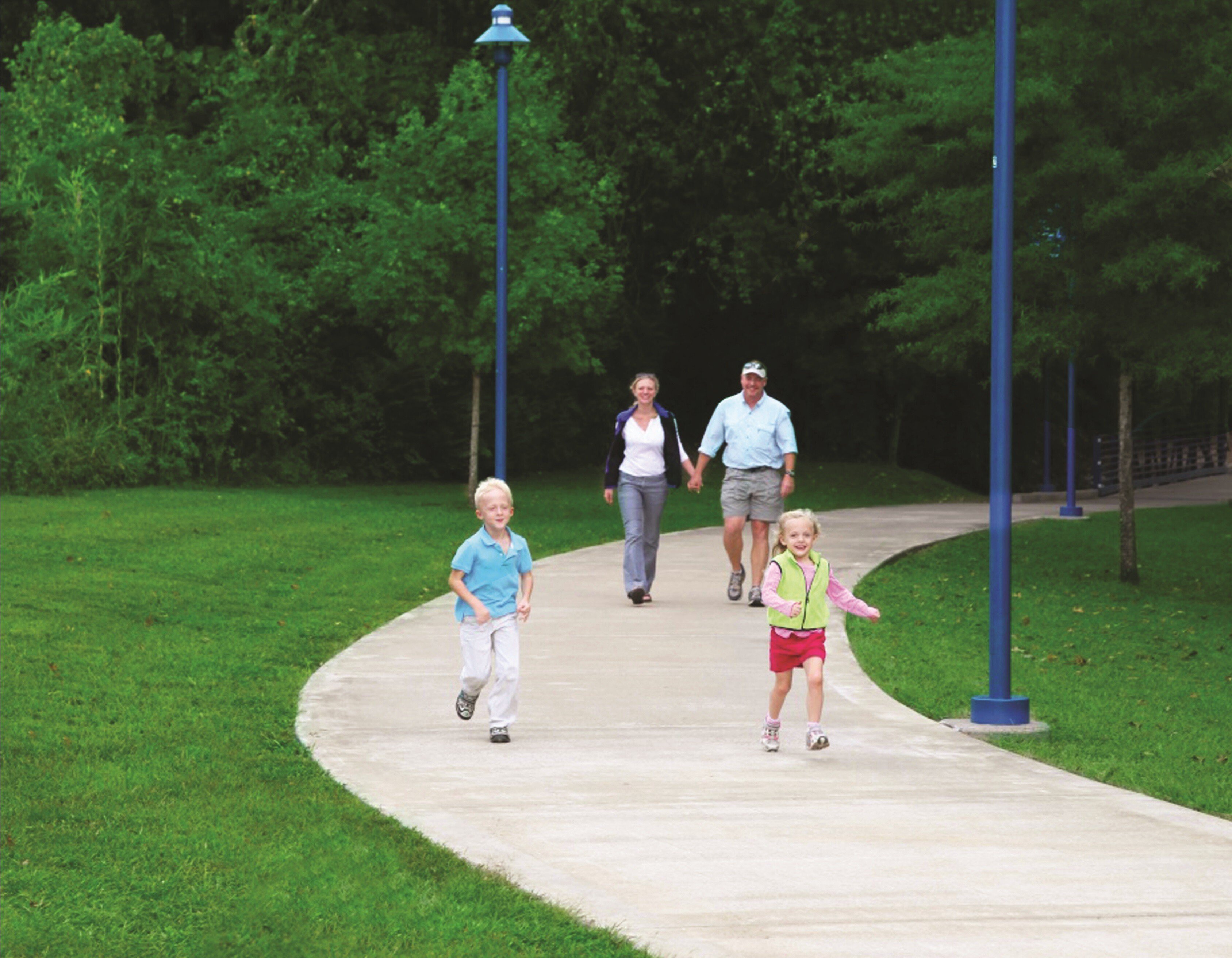
Schoolgrounds, neighborhoods, and community parks are great locations to integrate pathways near children. When it comes to community centers, focus on childcare facilities which can encourage children and teachers to take interesting, healthy walks in the surrounding neighborhood. Also consider seeking alternative locations in housing developments, including public, military, and student housing, which may offer special prospects for playful pathways.
5. Apply Interpretive Themes for Learning
Playful pathways may be themed by linking to local environment, social, or cultural topics. Possible topics could include local social history, natural history linking to local fauna, flora, or natural components, children’s literature, mathematics, health, science, art, etc. Adding a theme can allow the pathway to be more relatable to a more diverse group of people.
Infusing play into pathways provides a new, linear form of play environment different to the typical clustered playground of manufactured play equipment. The linear form makes it easier ot include play pockets and mix specially designed, commercially manufactured components with natural elements to encourage discovery and continuous movement.
To learn more about these design principles and ways to infuse play into pathway networks, request our best practice guideline, Pathways for Play®. The purpose of the program is to integrate play – critical for children’s health, into walkable, bikeable, shared-use community pathway networks infused with ‘play pockets’ providing opportunities for playing along the way.
